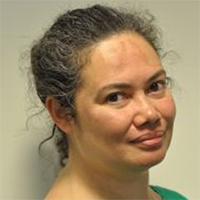Dr Mavoa’s research addresses some of the newest and most topical issues of our time – the interplay between urban nature and human health and well-being. Her talk will provide an overview of this exciting and rapidly growing area of research.
Biography

Dr Suzanne Mavoa is currently a Health Geographer and Senior Research Fellow in the Melbourne School of Population and Global Health at the University of Melbourne. In 2022, she will join the UBC Faculty of Forestry as Assistant Professor in Urban Forestry and Human Health.
Dr Mavoa’s research focuses on the relationship between natural environments – including urban forests, green spaces/green infrastructure, biodiversity – and human health and wellbeing. Recent research includes less-understood pathways linking urban nature to human health. These include consideration of how trees can mitigate environmental harms, such as air pollution, and how urban forests might support health via the environmental microbiome, promoting outdoor time and vitamin D synthesis from sunlight.
Dr Mavoa has been funded by the Australian National Health and Medical Research Council, and a University of Melbourne, Faculty of Medicine Dentistry and Health Sciences research fellowship.
Urban Forestry and Human Health
Natural environments are important for human health and wellbeing. We know that being in, or even having a view of, nature can be restorative and therapeutic. In cities, urban forests provide these benefits, and can potentially support health in many other ways. For example, urban green spaces and overall levels of ‘greenness’ in cities have been linked to improved physical activity, birth outcomes, mental health, and cardiovascular mortality. Yet most studies on the relationships between urban forests and human health have focused on relationships between a few coarse measures of the urban forest such as access to green spaces and overall vegetation levels. To better inform the planning and management of urban forests and minimise unintended negative health consequences (e.g., via allergens, infectious disease vectors) we need to move beyond the existing evidence base to understand the multiple pathways linking specific elements of urban forests to human health.
This talk will provide an overview of current knowledge and recent research that is investigating under-explored mechanisms linking specific elements of urban forests (e.g., biodiversity, private/public areas, soils) with health. These mechanisms include the environment-human microbiome, vitamin D synthesis, allergens, and mitigation of environmental harms such as temperature, air and noise pollution. Ultimately these new research directions will better inform urban forest design and management by answering key questions such as: What types of green space are beneficial to health? How much vegetation is needed, what type should it be, and where should it be located? What roles do biodiversity, soil and water play? And, ultimately, how can we best support the health of both urban forests and the people that live in cities?

